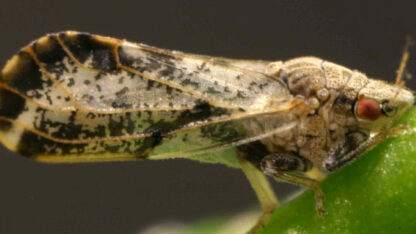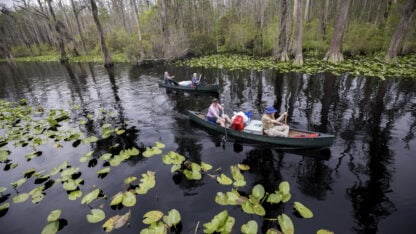Georgia has big conservation goals, and the military is helping to achieve them
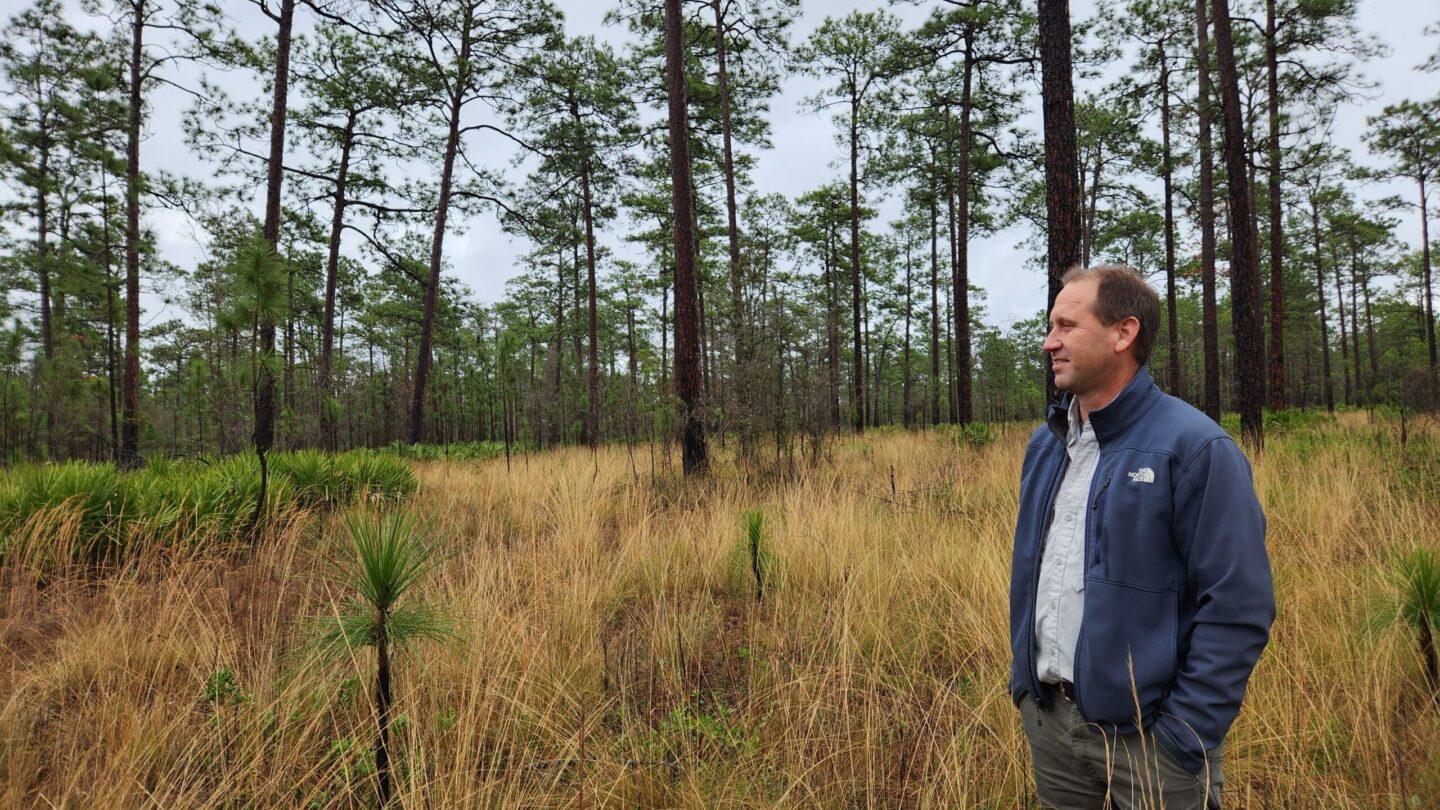
This coverage is made possible through a partnership with WABE and Grist, a nonprofit, independent media organization dedicated to telling stories of climate solutions and a just future.
One of Georgia’s oldest longleaf pine forests grows in the midst of Ceylon Wildlife Management Area — state-owned land on the coast between Brunswick and Naval Submarine Base Kings Bay.
The trees there were planted shortly after the Civil War. The soaring longleaf pines stand generously spaced apart, with knee-high, golden wiregrass in between. It’s the ideal habitat for unique species like the gopher tortoise, red-cockaded woodpecker and indigo snake.
“It’s a pretty phenomenal place,” said Jason Lee, program manager for the Wildlife Management Division of the Georgia Department of Natural Resources.
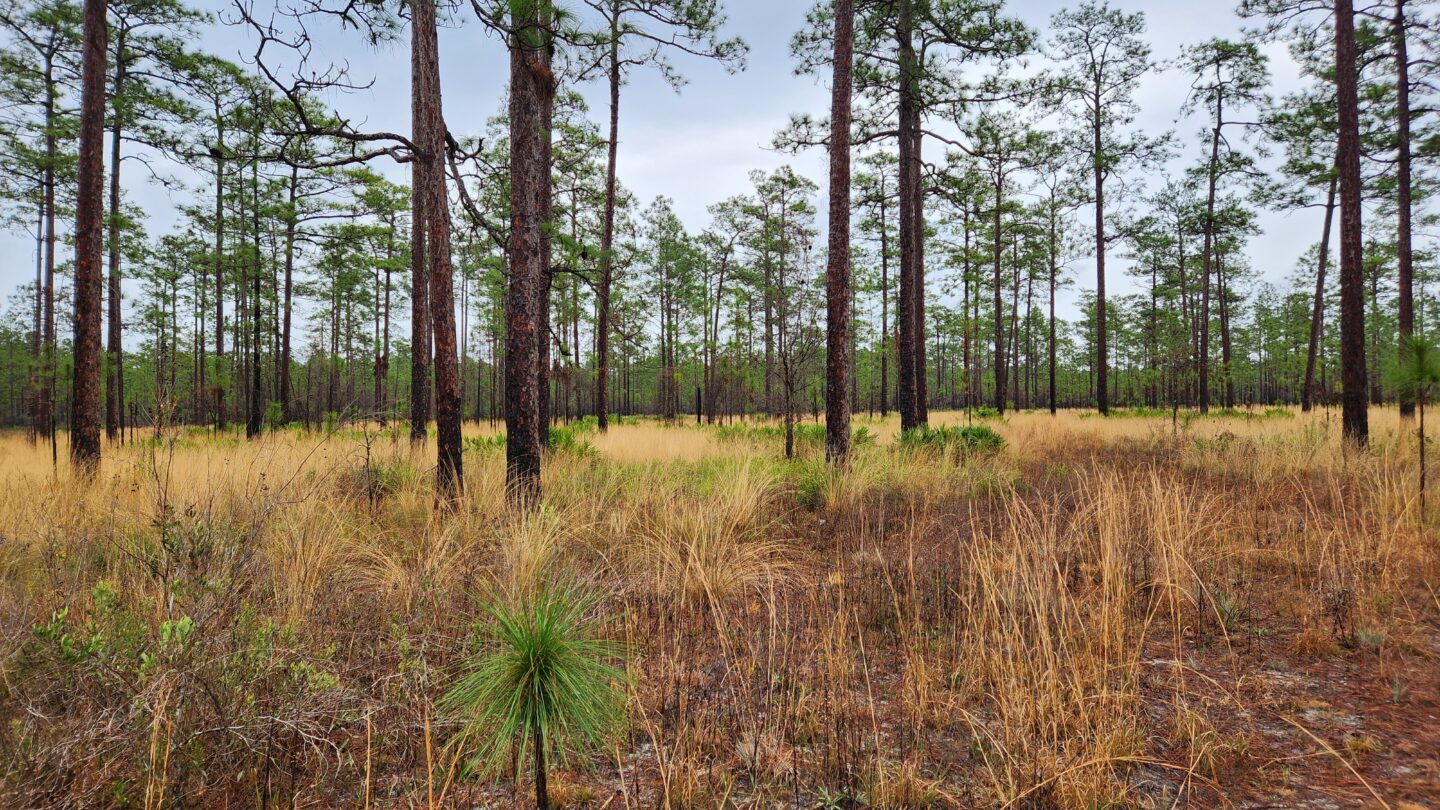
Lee and his team are working to transform much of the 27,000-acre wildlife management area back to the longleaf pine forest that originally grew there. The state bought this massive area of undeveloped land over several years, culminating in 2021, with help from state and federal grants, conservation groups, private foundations — and from the U.S. military.
Partnerships like this are common across the state, where sprawling military installations sit adjacent to land that’s ripe for development. The bases often prefer tortoises and woodpeckers for neighbors rather than communities full of humans. Meanwhile, state land managers and conservation groups need funding to compete with industry and developers for land to conserve and improve climate resiliency in the state — money that the military has.
“It’s just this happy coincidence that it works out,” said Lee. “We’re really fortunate to have the bases in our backyard, and we’ve been able to do a lot of conservation.”
By partnering, the bases here have helped protect more than 150,000 acres in the state and could help Georgia get its first national park. Conservation advocates and military base officials say their counterparts in other states could do more of the same.
Created by Jasmine Robinson/WABE
Interests aligned
The Department of Defense has long recognized the value of keeping land near military installations undeveloped.
“You don’t want airplanes falling on people … that tends to be what you want to avoid,” joked Dan Rhoades of Robins Air Force Base’s 21st Century Partnership, a program that works to support the middle Georgia base and its relationship with the surrounding community.
While crashes aren’t very common, Rhoades said people living near bases often complain about noise from planes and base activities. Lights from housing, meanwhile, can interfere with nighttime training. It all has the potential to create conflict between bases and neighboring communities.
To help prevent this, the Department of Defense launched the Readiness and Environmental Protection Integration (REPI) program in 2003. The program uses cost-sharing agreements to prevent what the military calls land use conflicts. In other words, to prevent land around bases from being developed. It helps enable projects like the Ceylon WMA, in which the state bought land with a mix of REPI funds, money from Georgia’s Outdoor Stewardship program, federal grants and a host of conservation groups.
“That’s what this project was partially all about, was to try to protect this big developable area,” said Lee of the Ceylon project.
In 2013, DoD expanded on the work of the REPI program by creating the Sentinel Landscapes Partnership with two other federal agencies, the Department of the Interior and the Department of Agriculture. That project aims to “strengthen military readiness, conserve natural resources, bolster agricultural and forestry economies, and increase climate change resilience,” according to its website. It covers eleven landscape areas across the country, including Georgia’s coastal plain, an area that encompasses the coast and parts of Middle and South Georgia.
Georgia has 151,035 protected acres in its designated Sentinel Landscape, more than any other landscape in the program.
Unlikely partners
The military and conservation communities aren’t always natural allies, in part because of a history of pollution on military installations. Just last year, the Environmental Protection Agency warned of water pollution at hundreds of bases from the dangerous “forever chemicals” called PFAS.
But advocates said in Georgia, the benefits of protecting important habitats outweigh pollution concerns that bases and regulators are working to address.
“I see absolutely no downside to partnering with the Air Force base that is working on their environmental issues to protect more habitat forever,” said Altamaha Riverkeeper Fletcher Sams, who has worked with Robins Air Force Base on projects including the effort to create a national park at Ocmulgee Mounds.
Robins, like many military air bases, has used firefighting foam with PFAS chemicals in it. There is also a superfund site on the base located at a landfill and sludge lagoon. But both of those issues are “in the regulatory pipeline,” Sams said.
And advocates agreed that partnering on land conservation can also streamline the process of addressing any pollution issues that do arise, because the key parties are already in touch.
“It’s not like the park’s happening over here and the base is over here. They’re going to be a part of this conversation,” said Tracie Revis, director of advocacy with the Ocmulgee National Park and Preserve Initiative.
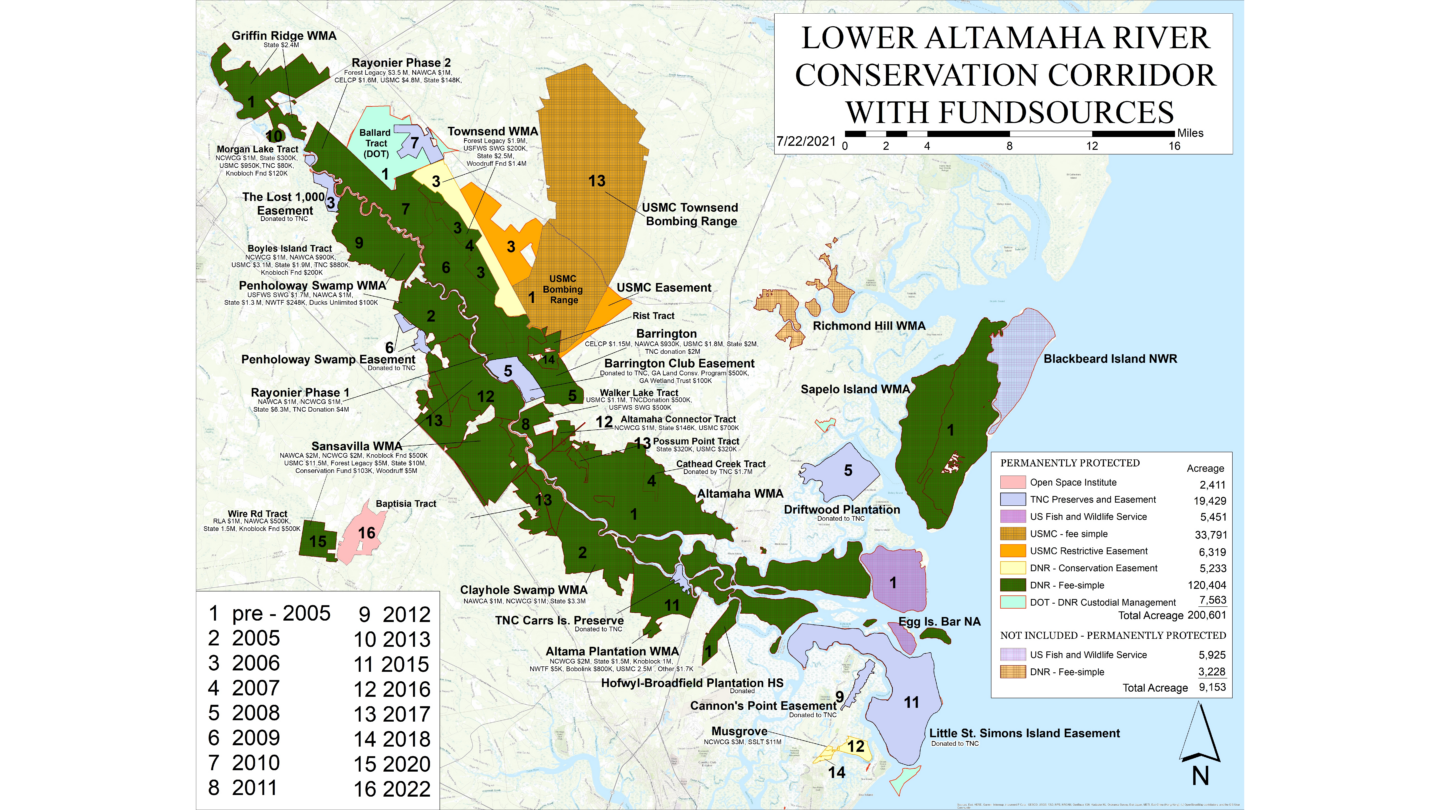
Georgia’s bases also have a history of forest stewardship.
The longleaf pine forests that once covered much of the state rely on regular fires to thrive. Fire clears away overgrowth that can choke out trees and other key plants in the ecosystem. Longleaf pines are specifically adapted to withstand fires, and grassy understory plants rely on fire to spread their seeds and grow. Before Europeans colonized Georgia, indigenous tribes like the Creek encouraged the fires that kept forests healthy and ideal for grazing animals such as deer.
For much of the twentieth century, forest managers suppressed fires, allowing forests to become overgrown. That wasn’t just bad for longleaf pines themselves — it also harmed the habitat for species that rely on longleaf forests, like red-cockaded woodpeckers and gopher tortoises.
But Army bases were a different story. They continued to have regular fires as an inevitable result of their training exercises, which often use live ammunition that can spark fires.
“It’s been really fortunate, biologically, conservation-wise that those bases have coincidentally been managing how we do now,” said Lee, who explained that DNR and other land managers have returned to managing forests with controlled fire. “They actually became havens for many of the species that we’re now managing for.”
While this helped those species survive in Georgia, Lee said it also placed an “unnecessary burden” on bases to protect the species since bases held some of their only habitat. By helping expand that habitat beyond the borders of the installations, bases have more leeway in how much impact their operations can have on critters living on military land.
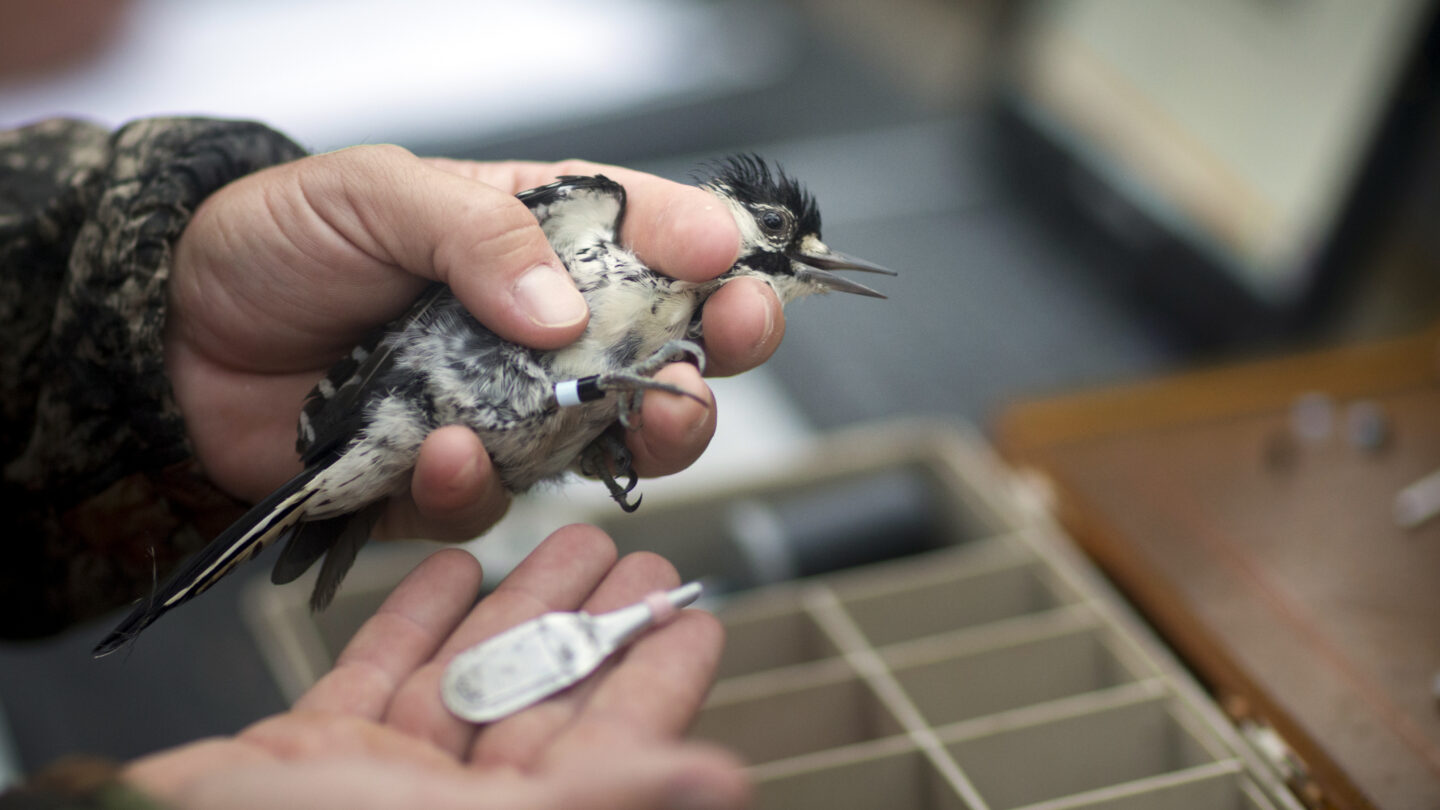
The road to a national park
While many of these dynamics exist around bases nationwide, people involved in the collaborations say Georgia’s military conservation partnerships stand out.
“When I’ve gone to REPI conferences … Georgia is often called out as a great example of REPI programs at work,” said Anne Flinn, the director of land protection for the Nature Conservancy.
Now, the relationships between military bases, DNR, and conservation groups could even help Georgia get its first national park.
Ocmulgee Mounds National Historic Park, near Robins Air Force Base, was the site of the capital city of the Creek Confederacy before the federal government forcibly removed them. There’s now a push to expand the current site and get it designated as a national park.
Courtesy of Ocmulgee National Park and Preserve Initiative
The Air Force base is helping.
“They’ve been an incredible ally in this whole process,” said Revis, who’s a Muscogee (Creek) Nation citizen as well as a part of the national park effort. “They have signed on to any letters of support. They’ve had their … sustainability report that’s come out. They’re looking at REPI funds, obviously, all of that to make sure that they’re putting their dollars into what they’re supporting.”
For the base, the benefits of a national park next door would go beyond the usual buffer zone and habitat protections, according to Rhoades. It would also provide recreational and educational opportunities for base personnel — and could help ensure the base and region thrive in the long term.
“In the end, if it has national park recognition, you’re not going to be changing that anytime soon,” he said. “That is an act of Congress.”
Decades of partnership
One reason Georgia has been able to participate to such a great extent in the REPI programs is the sheer volume of military installations in the state. With the coastal installations of Fort Stewart, Hunter Army Airfield, Townsend Bombing Range and Naval Submarine Base Kings Bay; Fort Benning near Columbus; Fort Gordon near Augusta; Robins Air Force Base in Middle Georgia and several other installations dotted around the state, the military has a huge footprint here.
Leaders in both the military and the conservation worlds in Georgia said the state’s many partnerships come down to decades of joint work and trust.
“We have the right people in the right places across multiple agencies that are not scared to pick up the phone, talk with one another, have a sincere interest and work together very well,” said Ken Bradley, the Sentinel Landscape coordinator in Georgia. “You just don’t see that in a lot of landscapes across the country.”
In the 1980s and 90s, when Bradley was a young lieutenant at Fort Benning, he remembers discussions about how to manage the installation’s population of endangered red-cockaded woodpeckers. Advocates with groups like the Nature Conservancy and Georgia Conservancy told similar stories. Now, he’s working with groups focused on coastal resilience in the face of climate change.
“A lot of those bridges have been crossed and there’s just a lot more mature effort now after it’s been worked on for 25, 30 years,” he said. “People have figured out how to work together.”
